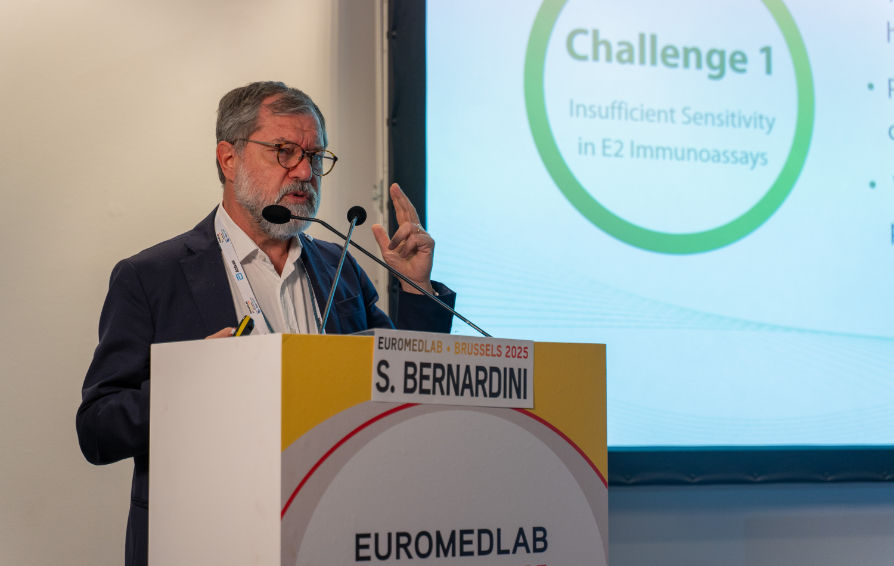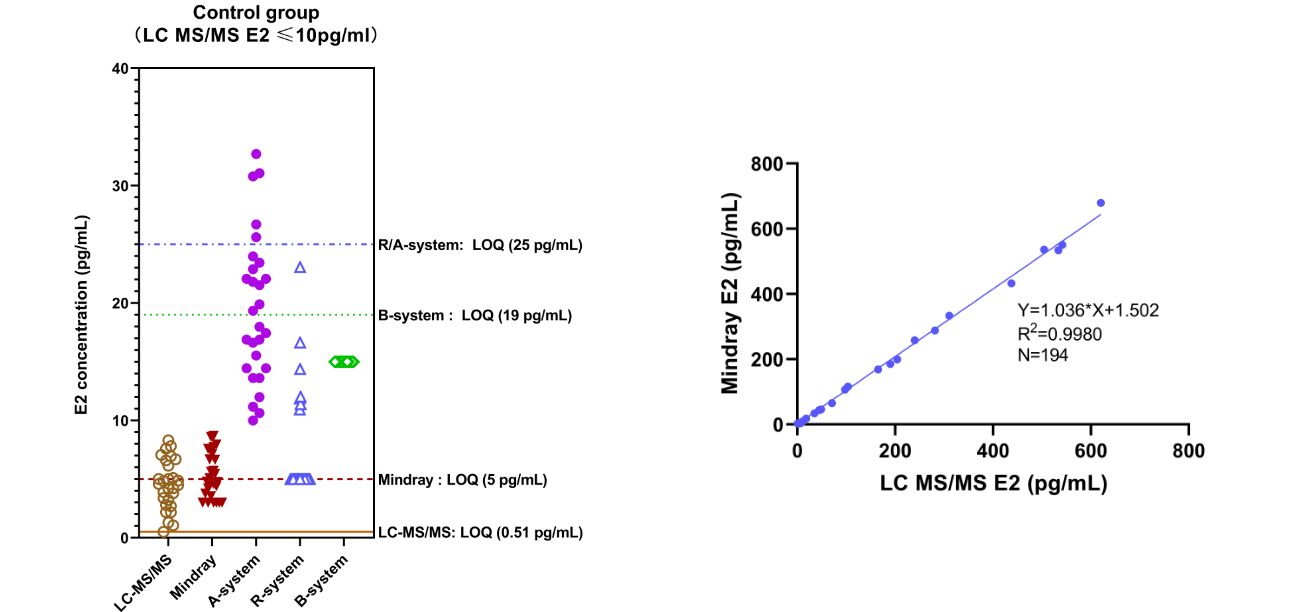Estradiol (E2) Detection Highlighted at EuroMedLab 2025: SEMS Technology Elevating Hormone Detection
2025-05-30

At the 26th IFCC-EFLM EuroMedLab in May, a specialized workshop on estradiol (E2) detection garnered significant interest from the global laboratory medicine community.
Led by Prof. Sergio Bernardini, Head Physician of the Laboratory Medicine Units at Tor Vergata University Hospital and Secretary General of the International Federation of Clinical Chemistry and Laboratory Medicine (IFCC), the workshop explored the latest advancements in E2 detection. It specifically emphasized the innovative application of Single Epitope Meta-Sandwich (SEMS) technology, enhancing both detection sensitivity and specificity.
A Key Challenge to Conquer in Treating the Most Common Malignant Tumor in Women:
Precision Detection for the Endocrine Therapy of Breast Cancer
Breast cancer is one of the most prevalent malignant tumors in women worldwide. Central to its endocrine therapy is the strategy of blocking the estrogen-estrogen receptor pathway. According to the data published by the International Agency for Research on Cancer in 2020, breast cancer has an incidence rate of 23.8%, representing the most common malignant tumor in women, and around 75%-80% of the patients need endocrine therapy as part of their treatment. Estrogen comes from different sources before and after menopause, and whether or not a patient is menopausal affects the treatment options. That's why precise E2 detection is so important in the endocrine therapy of breast cancer.

However, existing E2 detection technologies suffer from both insufficient sensitivity and specificity. In populations with low E2 levels, such as postmenopausal women, breast cancer patients, and children, traditional immunoassays struggle to reach the sensitivity levels needed for clinical applications. Moreover, breast cancer treatments such as Fulvestrant and Abemaciclib may interfere with E2 measurements, potentially causing unnecessary changes to treatment plans and affecting treatment outcomes.
SEMS Technology: From BNP to E2
A Top Performer Comparable to Mass Spectrometry (MS)
In response to these challenges, SEMS technology has been developed. SEMS, a sandwich immunoassay technology based on anti-metatype antibodies, specifically identifies immune complexes formed by the binding of antigens (low molecular compounds, oligopeptides, or proteins) to antibodies, enabling high sensitivity, high specificity, and high stability for E2 detection. Since the discovery of anti-metatype antibodies in 1982, this technology has seen ongoing advancements.

In 2008, HyTest was the first to apply this technology for BNP (B-type natriuretic peptide) detection and was granted a patent for this innovative application. Subsequently, through decades of dedicated effort and research by the team, the technology kept improving. By 2022, Mindray, leveraging its strong R&D and commercialization capabilities, established the Single Epitope Meta-Sandwich (SEMS) technology platform, signaling the transition of SEMS technology into large-scale production.

During the workshop, Prof. Sergio gave a detailed presentation on the clinical significance of the SEMS-E2 technology. In samples with E2 ≤ 10 pg/mL, SEMS-E2 showed the strongest correlation with MS, demonstrating its outstanding sensitivity. Unlike traditional competitive E2 detection methods, SEMS-E2 is completely free from the interference of breast cancer treatment drugs. This ensures accurate E2 measurements across different drug interventions, offering a reliable detection method for endocrine therapy in breast cancer.

| E2≤10pg/ml | Coincidence rate with LC-MS/MS | |
|---|---|---|
| SEMS-E2 | other CLIA E2 | |
| Letrozole (N=22) |
100% |
81.82% |
| Anastrozole (N=20) |
100% |
85.00% |
| Exemestane (N=22) | 100% | 59.09% |
| AIs+Abemaciclib (N=22) | 100% | 86.36% |
| AIs+Dalpiciclib (N=17) | 100% | 35.29% |
| AIs+Piperoxili (N=16) | 100% | 62.50% |
| AIs+Ribociclib (N=14) | 100% | 42.86% |
| Tamoxifen (N=20) | 100% | 61.54% |
| Toremifene (N=21) | 100% | 66.67% |
| Fulvestrant+ (N=20) | 100% | 0.00% |
Going Beyond Breast Cancer
A Universal Detection Technology for Multiple Diseases
Given the urgent clinical need for highly sensitive and precise E2 quantification, the emergence of SEMS technology has injected new momentum into the field of hormone detection. The SEMS method delivers performance highly comparable to MS, while offering greater ease of use, lower costs, and enhanced applicability in clinical practice.
As the technology continues to evolve, SEMS-E2 is anticipated to become the mainstream method for E2 detection in the future, contributing to the endocrine therapy of breast cancer and the precise diagnosis and treatment of other related diseases.

This IFCC EuroMedLab Workshop not only showcased the latest advancements in SEMS technology in E2 detection, but also offered a platform for experts and scholars in the global laboratory medicine community to exchange ideas and explore collaboration opportunities. We anticipate that SEMS technology will play an increasingly significant role in laboratory medicine, further enhancing patient care.